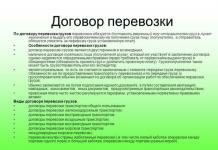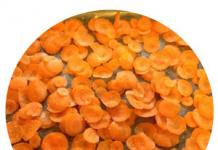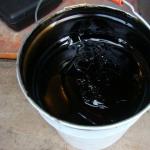When constructing buildings, the question of choosing a building material almost always arises. In this article we will look at two types of materials for building walls: foam blocks and gas blocks, and try to figure out what to build a house from and what is better - foam blocks or gas blocks.
Technology for the production of gas blocks and foam blocks
These are two types of building materials that are produced from different components and in different ways.
Foam blocks
Foam blocks are made from foam concrete - a porous material consisting of cement, sand, water and foam. Sometimes some other ingredients, such as ash, may be added to them. It becomes porous thanks to special chemical reagents included in the solution. This foam-like solution is poured into special molds and after hardening, finished products are obtained, including foam blocks. Due to their porous structure, foam blocks are lightweight, have low thermal conductivity and good sound insulation. This building material is very durable and strong.
Gas blocks
Now, to answer the question of what is better - a foam block or a gas block, let's consider

Properties also have a porous structure and the same properties that are inherent in foam blocks, but they are manufactured using a different technology. The composition of aerated concrete includes cement, lime, sand, aluminum powder and water. Pores appear when aluminum powder reacts with cement. The finished mixture is stirred and kept for a certain time until it reaches the desired condition. Then the resulting mass is cut into blocks using special strings. Next, they are placed in an autoclave, where all excess water evaporates from them, they acquire their final appearance and properties, and become ready for consumption. They are lightweight and have good soundproofing characteristics, just like foam blocks. Gas blocks have high strength and low thermal conductivity. These indicators are slightly higher than those of foam concrete, but still determining which is better - a foam block or a gas block - is not easy due to the many advantages of foam concrete.
Differences between foam blocks and gas blocks

In search of an answer to the question of what is better - a foam block or an aerated block, it must be said that these materials have only one difference - the high hygroscopicity of aerated concrete. Foam concrete, on the contrary, has low hygroscopicity.
What is better to build from?
Both materials have many similar benefits. So what is the best material to build a house from? A foam block is just as suitable for this as a gas block. Both materials make excellent one-story buildings and they have thermal conductivity values that compete with wood and are in many ways superior to ceramic bricks. Since they do not contain harmful substances, they are environmentally friendly for humans. But gas blocks have one drawback, due to which they are inferior in efficiency to foam blocks - this is the complexity of the technology for constructing walls from this material, due to its hygroscopicity. Aerated blocks are delivered from the factory with a high level of humidity, so after the construction of the house you cannot immediately carry out exterior finishing. You need to wait several seasons until the walls dry completely or install a ventilated facade, and this leads to increased construction costs. So, when determining which is better - a gas block or a foam block, the scales tipped towards the latter because of its efficiency.
In the segment of cellular concrete, two popular materials compete - foam concrete and aerated concrete. When planning the construction of a house, cottage, garage or bathhouse, each owner tries to take into account all the nuances, predict various situations, estimate the cost, in general, create the most realistic plan before starting work.
The first and important task is the choice of material for load-bearing walls. What is better to build a house from, foam block or gas block? Each of them has its own positive and negative reviews.
Foam concrete or aerated concrete - which is better for building a house?
Cellular concrete is a group of building materials made from concrete and various additives that give it a porous structure. The most famous representatives of this type are aerated concrete and foam concrete.
At first glance, these are identical materials. However, there are also differences that form distinctive properties, which are the stumbling block between supporters and opponents of these materials.
In order to make an objective conclusion and make the right choice, we suggest that you familiarize yourself with the difference between a gas block and a foam block - a comparison by characteristics, properties and price. To do this, we will study all stages of the life cycle of these wall materials, starting from the technological production process, ending with decorative finishing, i.e. Let's conduct a full comparative analysis.
Pros and cons of aerated concrete houses + reviews from owners
Pros and cons of foam concrete houses + reviews from owners
Advantages and disadvantages of foam concrete blocks + which one to choose
Comparison of which is better: foam blocks or gas blocks
1. Production of foam concrete and aerated concrete
Comparison within the framework of manufacturing technology (production)
Compound
Both materials are produced by mixing concrete with materials that give it a porous structure.
But, in the production of foam concrete, such a material (foaming agent, plasticizer) is wood saponified resin (WRS), and aerated concrete is pulverized aluminum.
Manufacturing technology
Foam concrete is produced in the form of separate blocks. In this regard, the variety of its sizes and types is limited.
Aerated concrete is produced in a mass, which, after hardening, is cut into blocks of a given size and configuration. Thus, a greater geometric diversity of elements in size is achieved.
Production
Aerated concrete blocks are produced only in factory conditions using specialized equipment.
Foam concrete can also be produced at small enterprises (mini-factories, installations, artisanal, private production).
Pores (cells)
Due to the nature of production, the pores on the outer surface of the aerated concrete block remain open, which makes it look like a sponge. During a day in water, aerated concrete gains up to 47% moisture. Those. becomes almost twice as heavy. the material is unprotected from moisture or precipitation. If you add frost to this, then an unprotected aerated concrete wall will quickly become covered with a network of small cracks, which can be eliminated in various ways.
 The pores of the foam concrete block are closed throughout the mass. This gives it hydrophobic properties. Foam concrete is like a float - it will stay on the water for a long time.
The pores of the foam concrete block are closed throughout the mass. This gives it hydrophobic properties. Foam concrete is like a float - it will stay on the water for a long time.
As user tests show, foam concrete that has stood (gained strength) for a month (recommended time) is able to stay on the surface of the water for more than a month.
2. Characteristics of foam concrete and aerated concrete
Side-by-side comparison within material properties and characteristics
Pore sizes
 Pores of foam concrete and aerated concrete Aluminum powder or paste, distributed over the aerated concrete mixture, allows you to obtain bubbles of the same size - pores.
Pores of foam concrete and aerated concrete Aluminum powder or paste, distributed over the aerated concrete mixture, allows you to obtain bubbles of the same size - pores.
In foam concrete, the pores are different in type (volume). Material prepared for the website www.moydomik.net
Density
The same for foam concrete and aerated concrete, it ranges from 300 to 1200 kg/m3 and depends on the brand. For example, brand D 500 has a density of 500 kg/m3 at the natural moisture content of the material;
Weight (whichever is heavier)
The weight of cellular concrete also depends on the brand. For example, 1 cubic meter. D 500 grade material will weigh 500 kg.
Strength (which is stronger, stronger)
For aerated concrete, it is uniform throughout the entire volume of the block, while for foam concrete it is non-uniform, which is due to the specific distribution of the foaming additive.
In addition, foam concrete and aerated concrete have low bending strength. This puts forward additional requirements for the construction of the foundation and its ability to ensure the dimensional stability of the house (prevent uneven shrinkage).
Strength gain
Aerated concrete has a maximum density (corresponds to the brand) in the early stages of production. During storage of gas blocks or operation of the building, it decreases.
Foam concrete, on the other hand, needs at least 28 days from the date of production in order to reach the declared density. This puts forward special conditions for the start of construction work.
To make sure that the block has gained strength, it is better to purchase it in advance and store it at the construction site for a month. Otherwise, a structure built from freshly made foam concrete will experience significant shrinkage. It is worth noting that foam concrete gains strength with use. That is, the older the block or house made of foam concrete, the stronger it is.
Size (geometry)
Due to the fact that aerated concrete is cut and not poured into formwork, its dimensions are much more accurate. This helps to achieve a smaller thickness of the masonry joint (2-3 mm) and reduce the area through which heat escapes to the outside (cold bridges).
The thickness of the foam block seam varies widely and is 2-5 mm. To a large extent, the thickness of the seam is determined by the skill of the masonry worker.
Moisture absorption
The ability to absorb water is greater in aerated concrete, which is due to the presence of open pores.
Thermal conductivity (which is warmer)
With the same density (brand of block), foam concrete and aerated concrete retain heat differently.
Aerated concrete is a better heat insulator than foam concrete. For example, a sufficient wall thickness for Moscow and the Moscow region when using D 500 foam block will be 600 mm, when using aerated concrete, only 450 mm.
3. Laying foam concrete and aerated concrete
Comparison of differences within the construction process (installation, laying, processing)
Foundation requirements
They are identical, since both types of cellular concrete are lightweight. However, an unprotected aerated concrete block, after getting wet, becomes almost half heavier, which creates additional pressure on the foundation. Foam concrete does not have this feature.
Cutting, sawing, drilling blocks and additional elements
They are identical; thanks to their structure and composition, cellular concrete blocks can be given the desired shape using a regular hand saw. Drilling, punching a hole or groove (groove) is also easy.
Speed of construction (laying, installation)
The low weight of both materials being compared makes the construction process quick and simple compared, for example, with piece bricks.
Requirements for mortar and adhesive for installation
For aerated concrete, you need to use a special adhesive mixture, this allows you to reduce consumption and ensure a thin seam.
Foam concrete can be laid on glue or sand-cement mixture.
Protection (preservation)
If there is a need to suspend or stop construction work, for example, in the winter, the materials need to be preserved. At the same time, walls made of foam blocks will last for a certain period without problems, but walls made of aerated blocks need to be wrapped in film so that they do not absorb moisture. Moreover, aerated concrete needs protection at any time of the year. Of course, in the summer this is not so critical, a wall made of aerated concrete will dry out in a week or two (is it worth interrupting work for so long?), but in the winter this getting wet followed by freezing and thawing can lead to destruction;
Shrinkage
Foam concrete can shrink within 1-3 mm/m.m., shrinkage of aerated concrete does not exceed 0.5 mm/m.m.
Ability to hold fasteners
For both materials, you need to use special fasteners (hardware, screws, chemical anchors). They are designed specifically to be fixed in walls made of blocks with a porous structure.
4. Finishing foam concrete and aerated concrete
Comparative analysis within finishing materials and works
Finishing material
For cladding aerated concrete and foam concrete walls (facade), you can use: siding, lining, plaster, ventilated facade.
Insulation material
Due to the fact that the pores of foam blocks and gas blocks contain air, they are good heat insulators. Therefore, a house made of aerated concrete or foam concrete does not need insulation (if the walls are sufficiently thick). If such a need arises or, for example, a bathhouse is built from these materials, only flexible insulation should be used.
Plaster mixture
For foam concrete and aerated concrete, you need to use special mixtures. The main advantage of plaster for cellular concrete is that it retains the ability to breathe. At the same time, the requirements for plaster for foam concrete also consist in the fact that the composition must have good adhesion to the surface.
Plastering technology
The more porous structure of aerated concrete gives it greater adhesion to any plaster.
Foam concrete requires the use of a reinforcing mesh in order for the plaster to hold securely. As an alternative, craftsmen advise treating the surface of the foam block with a float or sandpaper.
5. Cost of foam concrete and aerated concrete (which is cheaper)
Foam concrete is 20% cheaper than aerated concrete of the same brand. It is cheaper because... Cheaper materials and equipment are used in its production. This also leads to the appearance of a large amount of falsified material.
However, when calculating the cost of construction, you should not take into account only the purchase price of the blocks. It is also necessary to take into account the price and consumption of the adhesive mixture, finishing materials, the need for additional materials (rebar, reinforcing mesh, additional insulation, water repellents, etc.). Only after this can we say with confidence whether aerated concrete or foam concrete is cheaper.
Which is better, foam block or gas block (comparison) - video
Comparison of foam concrete and aerated concrete - which is better (table)
The table compares the main parameters that determine the properties of gas blocks and foam blocks. As a result, it is possible to determine which material to choose for construction under given conditions and requirements.
| Parameter | Foam concrete | Aerated concrete |
|---|---|---|
| Pore-forming additive | wood saponified resin (classified as moderately hazardous substances) | pulverized aluminum |
| Manufacturing technology | Block casting | Block cutting |
| Variety of elements | Less | More |
| Manufacturing | Handicraft production possible | In factory conditions |
| Pores | Closed | External - open, internal, mostly closed |
| Pore sizes | different sizes | same size |
| Block sizes | ||
| height (thickness) | 200, 300, 400 | 200 |
| length | 600 | 500, 600 |
| width | 100-300 | 75-500 |
| Density, kg/m3 | 300-1200 | |
| Weight, kg/m3 | 300-1200 | |
| Compressive strength, for grade D500 | B 1 | B 2.5 |
| Strength gain | Instant with further loss | Does not correspond to the calculated one, with further recruitment |
| Size Accuracy | Objectively existing errors | Minimum error |
| Moisture absorption | Less | More |
| Frost resistance, cycles | F-30 | F-25 |
| Thermal conductivity, W/M*k | 0.08 (thermal insulation) - 0.36 (structural) | 0.1 (thermal insulation) - 0.14 (structural |
| Appearance | Worse | Better |
| Foundation requirements | identical | |
| Easy to install, cut, drill | identical | |
| Requirements for the adhesive mixture | Any | Only special mixture |
| Wall protection | Not needed | Need |
| Shrinkage, mm/m.p. | 2-3 | 0,5 |
| Ability to hold hardware | identical | |
| Finishing material | Any | Allowing you to maintain the ability of the block to “breathe” |
| Insulation material | Preferably soft insulation (if necessary) | |
| Plastering | More difficult due to the smooth structure of the block | Simple |
| Price, rub/m3 | 2200-2800 | 3200-3500 |
Bottom line
As you can see, there is no clear answer to the question of which is better, aerated concrete or foam concrete. Based on this table, we can conclude that foam concrete and aerated concrete have significant differences that do not allow them to be put on the same level. Despite this, the general conclusion will be: aerated concrete has the best strength indicators, foam concrete in all other respects. Which criterion is more important depends on the specific situation, region and construction budget. Accordingly, everyone decides for themselves whether to build a house from foam blocks or gas blocks.
Tags: Foam concrete Aerated concrete Construction of a house
Construction of a residential building is a special process that does not tolerate errors, especially in terms of durability and comfort. Especially in our latitudes, where temperatures can fluctuate within significant limits, as can weather conditions. Choosing quality material in this case is an important mission, and one who knows what he is looking for can cope with it. Today we are looking at two materials widely used in modern house construction - aerated concrete and foam concrete, comparing them and assessing each material according to several characteristics.
Comparison of materials
Foam concrete is essentially cement, sand and a foaming agent. All this is mixed, poured into molds and left alone until completely hardened. That is, the process can be carried out directly on the construction site.
Foam block and gas block - appearance
But aerated concrete requires high temperatures and a humid environment. It consists of lime, cement, water and sand. Aluminum powder in this composition acts as a gas former. The resulting mixture is cut into blocks with strings and placed in an autoclave. There, under the influence of high pressure, the material acquires its final form and its best qualities - resistance to mechanical stress, durability, fire resistance and flexibility in processing.
It turns out that both materials are lightweight concrete, only the way to create air bubbles in them is different.
Both materials are manufactured according to the same GOST, which means they meet the same requirements. Their physical and technical characteristics almost repeat each other. But this does not mean complete identity of aerated concrete and foam concrete.
Aerated concrete has some advantages during its heat treatment, but it cannot be said that it is superior to foam concrete. Nevertheless, it is the quality of cement and its density that determine the degree of quality and reliability of the product. The laying of these two materials is also different: aerated concrete blocks are placed on glue, and foam concrete blocks are placed on ordinary cement mortar. It is cheaper than glue, but practice shows that much more of it is required, and it is more difficult to work with.
It turns out to be a curious thing - aerated concrete with glue is more expensive than foam concrete with cement mortar, but at the same time the cost is almost the same. In addition, the glue does not allow cold bridges to form, which means it will be easier to warm the interior, which will have a positive impact on cost savings.
Another difference between the materials is the degree of accuracy of the block sizes. However, at the factory the dimensions are observed much more accurately than at the construction site. Therefore, laying aerated concrete is easier and more pleasant.
Comparative table of characteristics of foam concrete and aerated concrete
Advantages and Disadvantages
If we talk about the production of materials, then foam concrete from the point of view of the complexity of the process looks preferable. For aerated concrete, you need to build a workshop, install a powerful electrical network, and a gas pipeline. Foam blocks can be easily produced using portable equipment, which is not difficult to find - there are plenty of modifications of them on sale. Another thing is that a simplified production method often attracts illiterate manufacturers who do not strive for accuracy of linear dimensions, compliance with the level of thermal conductivity, density and strength. You can avoid encountering low-quality products by finding a competent manufacturer who has all the necessary quality certificates and periodically tests its products for compliance with modern standards.
Foam concrete and aerated concrete blocks are easy to lay, and due to their size, they save glue or cement mortar
Foam concrete can be toxic - since it is not autoclaved, chemical processes are used to create it. This also affects the strength of the product. With the same density indicator, the degree of strength of aerated concrete and foam concrete is different. Let's take, for example, a density of 500 units. With this indicator, aerated concrete copes well with loads, while foam concrete cannot boast of high strength and is used only as insulation.
Water absorption and frost resistance are two important indicators for a material.
An aerated block can absorb more water than a foam block, but is less resistant to low temperatures. True, when constructing residential buildings, their outer side is covered with a protective layer in the form of plaster, tiles, siding and other materials, which means that the gas block will be protected from exposure to water.
Video: characteristics of gas and foam blocks
Construction of a house
Houses built from these materials will cost less than brick ones. And there are reasons for this. Firstly, aerated concrete and foam concrete are lightweight materials, which does not oblige the builder to build a massive foundation. Its light version is enough. Secondly, the heat and sound insulation of both materials is at the same level, which allows you to subsequently save money. And not only in the future. During the construction process, walls of smaller thickness can be erected, which means savings on materials. Thirdly, savings in materials also apply to glue and cement, of which not so much will be required for large volumes of blocks.
Houses made of foam blocks and gas blocks are very reliable, because these materials are durable and non-flammable. They do not rot and are not susceptible to attacks by rodents and pests.
If you are laying internal structures, such walls will be easy to tap. And finally, the most important thing is that these walls “breathe”, which creates comfortable living conditions in the house.

The most popular cellular concretes include foam and gas blocks. Despite a certain external similarity, these products differ in almost everything and have their own optimal scope of application. The difference manifests itself both during the installation process and in subsequent operation; a specific type should be selected at the design stage.
Both materials belong to the group of cellular concrete. The advantages include light weight, non-flammability, good heat retention, the need for protection from open moisture, simple processing, high speed of installation.
Review and comparison of characteristics and properties
The difference is evident in almost everything:
| Properties and Options | Foam block | Gas block |
| Compound | Cement, sand, water foaming components | Portland cement, quicklime, quartz sand, gypsum or sulfanol, aluminum powder |
| Manufacturing method | Kneading and hardening in molds, production at home and on construction sites is allowed | Preparation of sand-water slurry, introduction of the remaining components, pouring into molds, holding until the end of hydrogen evolution, cutting, autoclave heat treatment. Automated factory cycle including quality control |
| Structure | Closed cells of uneven size | Open, with pores of the same diameter and uniform properties throughout the entire cross-section of the aerated block |
| Block surface condition | Loose | Smooth, even |
| Geometric accuracy | Not controlled | High, the deviation in length does not exceed ±0.7 mm, in width – 0.7. Checking dimensions is a mandatory stage in the production of prefabricated aerated concrete |
| Scope of application | Partitions, thermal insulation, prefabricated monolithic floors | Laying load-bearing structures in residential buildings is allowed |
| Possibility of concreting directly on the construction site | Allowed | No, ready-made gas blocks are used |
Both the similarities and differences between foam and aerated concrete are more clearly demonstrated by comparing their performance characteristics.
| Indicator name | Foam concrete | Aerated concrete |
| Density, kg/m3 | 300-1200 | 300-900 |
| Dry thermal conductivity coefficient, W/m°C | 0,1-0,4 | 0.08-0.17 (average – 0.12) |
| Water absorption,% | Up to 14 | Up to 20 |
| Compressive strength, kgf/cm2 | 15 | 28-40 |
| Concrete class depending on brand | B0.25-B12.5 (the latter for grades with high cement content) | B1.5-B3.5 |
| Sound absorption, dB | Up to 60 | 40-43 |
| Vapor permeability coefficient, mg/m h Pa | 0,2 | 0,14-0,23 |
| Shrinkage, mm/m | 5 | 3 |
Key differences between aerated block and foam block
The main difference concerns the manufacturing method and quality control, in particular, foam concrete is made in artisanal conditions; these products are not certified. The parameters of gas blocks are regulated by GOST 21520-89 and other standards, the process of their production: from dosing components to checking dimensional accuracy is fully automated, the risk of human errors is excluded. Having undergone autoclave treatment, aerated concrete can withstand loads much better; at the same density, it is always stronger, and its other characteristics are more stable.

This is the main reason for allowing the use of aerated blocks for the construction of load-bearing walls of houses. Due to the lack of quality control, foam concrete is not suitable for these purposes even with a high cement content. But it holds heat equally well, and in terms of sound absorption it often surpasses factory products. The difference is clearly shown by experience with placing the material on water: with equal density, the first one will sink faster, the second one will stay on the surface for some time due to the closed structure of the cells. Aerated concrete absorbs and removes moisture equally well; if appropriate ventilation is organized, it does not accumulate it inside, which compares favorably with “impenetrable” varieties.
The installation process of aerated blocks is faster due to the adhesive mounting, and the risk of cold bridges being formed is minimized. Foam blocks are radically different in this regard - due to the uneven surface, they are laid on a cement-sand mortar. This affects not only the construction time, but also the appearance of the masonry: a wall made of smooth products looks good even with a thin layer of paint (provided it has sufficient hydrophobic properties), while a wall made of loose ones needs serious finishing.
The last factor is the price; 1 m3 of foam blocks costs 20-25% lower than autoclaved silicate blocks of the same size and density. This is one of the key differences; for large volumes, it is more profitable to build partitions made of foam concrete. But when comparing the final costs, gas blocks benefit: high dimensional accuracy allows them to be laid with glue, and a more even surface is easier to protect from external influences. Autoclave products have a longer service life.

What is better to choose depending on the purpose of the construction project?
For load-bearing structures, only one option is allowed - factory certified gas blocks. For these purposes, you need to select a wall type with a density grade of at least D400. The nuances of construction from aerated concrete include installation with adhesive for all rows except the first, the need for an armored belt when laying floors and roofing systems, and restrictions on the number of storeys. If all requirements are met, a house made of this material will last at least 50 years.
When constructing a garage or light outbuildings, the products are practically different, everything is decided by the budget. For internal partitions, preference is given to foam concrete, including because it perfectly absorbs noise.
A controversial point is the use in conditions of high humidity. In practice, there is no significant difference between the vapor permeability coefficients; for high-density aerated concrete it is less than for foam blocks. The costs of steam and waterproofing for these materials are equally high; many specialists will give preference to ordinary cinder blocks or timber for the construction of a bathhouse, even despite their heavy weight.

It is recommended to choose products if you have a limited budget and the need to reduce the load on the foundation. It is impossible to say unequivocally which type of cellular concrete is better suited for a bathhouse; both require condensate drainage, waterproofing and insulation of the steam room area. Foam blocks are selected more often due to their lower price, but only for one-story buildings. High-quality aerated concrete is optimal for the construction of frequently used baths, but it requires reliable protection on all sides, including for internal partitions.
Foam concrete is clearly selected when it is necessary to prepare and pour the solution directly on the construction site. This situation arises when concreting floors and floors with subsequent screeding and filling the interstitial space. It is easier to make blocks with a non-standard configuration from this material, for example, for arched partitions. Hardening occurs under natural conditions; if you use high-quality binder and follow the mixing rules, the structure will last a long time.

Ideally, foam concrete or aerated concrete are combined. This is a well-established practice: load-bearing walls are made of more durable and autoclaved products, internal or auxiliary partitions are made of foam blocks. Their finishing begins immediately, starting with the facade. Regardless of the chosen variety, preference is given to certified products.
These materials belong to to the class of lightweight concrete. Each has its own advantages. It is not a subjective opinion that will help you make your choice, but knowledge of the basic properties of foam concrete and aerated concrete.
What is the difference between a foam block and a gas block? Characteristics
Cellular concrete, from which foam blocks (foam concrete) and aerated concrete blocks (aerated concrete) are made, is a wall material in which small pores are evenly distributed over the entire surface. Production technology and main components affect the characteristics of these largely similar building materials.
Video about the difference between foam concrete and aerated concrete (plus polystyrene concrete), comparison.
How to produce
Lightweight concrete is made from environmentally friendly components. The production method has significant differences, but pores appear as a result of different technological processes.
Foam blocks:
- the components are combined, a special foaming filler is added;
- concrete and foam are mixed mechanically;
- hardening takes place under natural conditions;
- production equipment is affordable for an average entrepreneur. Foam blocks are often produced in small handicraft industries;
- finished products often have an uneven surface. Deviations in size can be quite significant, which deteriorates the quality of the masonry.
Gas blocks:
- the cellular structure appears as a result of a chemical reaction between the main components;
- to increase strength, finished blocks are processed in an autoclave;
- aerated concrete can only be produced in a factory using high-tech, expensive equipment; the quality of the material is much higher than that of foam blocks produced in an artisanal way;
- the geometry of gas silicate blocks is almost ideal. The installation of the structure is progressing at high speed, the masonry is strong and monolithic.
What is it made from?
Both types of cellular concrete can be safely classified as environmentally friendly building materials. Some builders are wary of the aluminum powder required for the production of gas silicate blocks. But this component is missing in finished products.
For the production of foam blocks lime, water, cement, some types of industrial waste are used: blast furnace slag, and others. An obligatory component is soap or sulfide lye, which forms the foam structure of the material.
Composition of aerated concrete: cement, quartz sand, water, lime. A mandatory component is aluminum paste. In its pure form, this component is harmful to human health, but during the production process the particles dissolve.
Video about the production of aerated concrete and foam blocks, the difference between aerated concrete and foam concrete.
How to distinguish aerated concrete from foam concrete
Differences between the foam block and the gas block are clearly visible:
- Foam block: gray shade, smooth surface.
- Gas block: color – white, surface rough, embossed.
Compare the block structure. The differences are visible to the naked eye. The pores of foam concrete are much larger.
Do an experiment:
- Break off a small piece from the gas block and foam block, put them in two glasses
. - Open-cell aerated concrete will quickly absorb moisture and sink to the bottom.
- Foam concrete practically does not absorb moisture. A piece of material will remain on the surface for several days.
- If you compare foam block and gas block: which repels moisture better, then the answer is obvious.

Structure
 Foam concrete – closed cell material. Walls built from foam concrete have excellent heat and sound insulation characteristics. The material absorbs water less easily than aerated concrete. But exterior finishing is still needed.
Foam concrete – closed cell material. Walls built from foam concrete have excellent heat and sound insulation characteristics. The material absorbs water less easily than aerated concrete. But exterior finishing is still needed.
Fine-celled pores with microcracks– this is the structure of aerated concrete. The material absorbs water more strongly than foam concrete. This feature of the material requires the mandatory application of a special coating that protects against moisture penetration.
Strength
Aerated concrete or foam concrete - which is stronger? This indicator largely depends on the density of the material. Density of foam concrete– about 650–700 kg/m3, density of aerated concrete– 450 kg/m3. Perhaps the foam concrete should be stronger.
But, thanks to the use of modern technologies and the factory production method, gas silicate blocks with a strength of 35 kgf/cm2 and a density of 400 kg/m3 can withstand the same load as foam concrete with a density of 700 kg/m3 and higher.
Conclusion: Aerated concrete is considered a higher quality and durable material. For the durability of buildings, choose gas silicate blocks. Please note that costs will also increase.
Features of application
Gas silicate and foam blocks are used in the construction of low-rise buildings. They are erected from foam concrete:
- partitions;
- load-bearing walls (not higher than the third floor);
- various types of fencing.
Aerated concrete is suitable for:
- construction of partitions;
- construction of load-bearing walls;
- filling frames in monolithic buildings;
- Durable aerated blocks are used for the construction of higher-rise buildings using a stiffening belt.
What's warmer?
Foam block or gas block? Gas blocks have lower frost resistance than foam blocks, but thanks to their ideal geometry, they can be laid using cement-adhesive compositions. High-quality fit of gas silicate blocks ensures a monolithic structure, and “cold bridges” are minimized.
Compare:
- thermal conductivity coefficient of aerated concrete with density D 500–0.12;
- The thermal conductivity coefficient of foam concrete with a density of D 700 and above is 0.24.
Foam blocks have high thermal resistance and accumulate heat well. This fact allows you to reduce heating costs. But, to achieve this result, walls made of foam concrete must be almost 2 times thicker than those of a house built from aerated concrete blocks.
Conclusion: houses made of aerated concrete are almost twice as warm as those built from foam concrete with the same wall thickness. Insulating buildings and installing ventilated facades will ensure a pleasant microclimate in the house.
What is cheaper: foam block or gas block? Prices
 Foam concrete or aerated concrete? The cost of equipment for the production of aerated concrete blocks reaches several hundred thousand dollars. Complex technology for the production of high-quality material also requires considerable costs.
Foam concrete or aerated concrete? The cost of equipment for the production of aerated concrete blocks reaches several hundred thousand dollars. Complex technology for the production of high-quality material also requires considerable costs.
Foam blocks are produced in artisanal conditions, often right on the construction site. The equipment costs several times less. The quality and geometry of finished foam blocks are inferior to aerated concrete.
Conclusion obvious: aerated concrete is more expensive than foam concrete. But the costs are fully compensated by the durability of the structure. The consumption and cost of glue for laying aerated concrete blocks with ideal dimensions is much lower than the price of a larger volume of cement mortar, which will have to equalize the errors on the sides of the foam blocks.



















